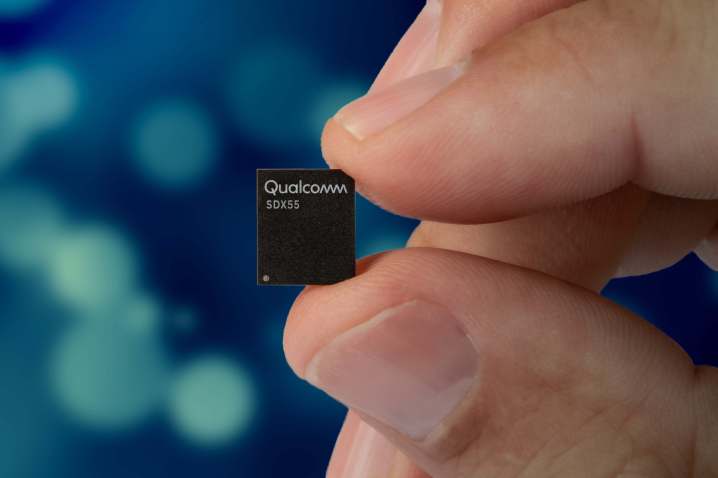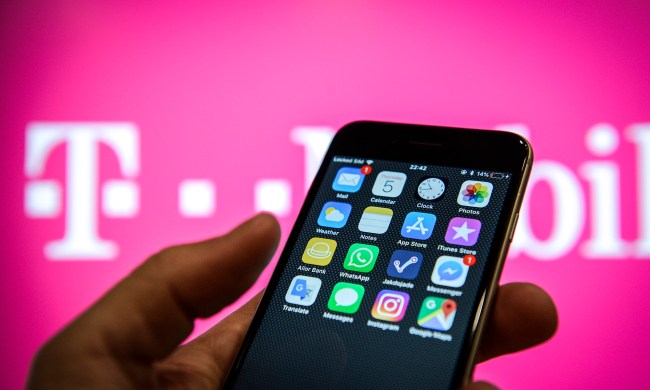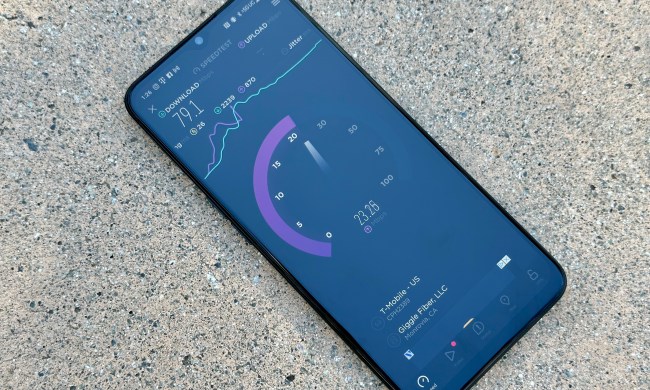
A wave of next-generation 5G smartphones will be unveiled at MWC 2019 in Barcelona next week, but Qualcomm is already preparing for an even faster future. On Tuesday, the silicon giant unveiled a second-generation 5G modem for smartphones to come later in 2019, promising blistering download speeds as high as 7Gbps.
The fifth generation of wireless networks, or 5G, promises dramatically faster speeds, instantaneous communication, and the ability to connect almost anything. While the technology may change the game for everything from self-driving cars to virtual reality to industrial manufacturing, smartphones will be at the heart of the initial rollout. And the phones we see at MWC will use Qualcomm’s Snapdragon X50 modem, which was announced in 2016 and finally released last year. That chip peaked at 5Gbps, which is faster by far than 4G networks — and apparently just the beginning. The new Qualcomm Snapdragon X55 5G theoretically reaches 7Gbps, meaning you’ll be able to download entire movies to your phone before you can finish putting on your headphones.
The X55 5G will simplify future development for phone makers, Qualcomm said, thanks to support for both sub-6 GHz and millimeter wave bandwidths, two competing slices of network being promoted by different carriers that will both support 5G. And multi-mode support for 5G, 4G, and even networks as old as 2G means Qualcomm is “effectively making 5G available in any region around the world,” explained Qualcomm’s Nitin Dhiman during a product briefing ahead of the news release. The company says this will allow phone makers and other manufacturers to move their products into the market more quickly.
But more than just a faster modem, Qualcomm announced a complete suite of components; there’s the QTM525 5G mmWave antenna, which adds support for the 26GHz band and is more compact than earlier versions, allowing for slicker industrial designs. Those antenna make possible a reference design phone the company showed Digital Trends that looks just as sleek and beautiful as the phone you’re reading this article on. A few years earlier, the technical challenges posed by next-gen networks — millimeter wave in particular — made slick 5G phone designs seemed insurmountable.
“It’s very challenging. There’s no question about that,” Ignacio Contreras, director of Product Marketing with Qualcomm, told Digital Trends. “Up until a couple years ago, people thought it was impossible. But it has been solved.” Qualcomm also announced signal boosting chips, envelope tracking modules, and the filters and amplifiers manufacturers will need for next-gen phones. A slew of them are clearly on the way.
“Virtually all major Android manufacturers will be announcing or launching flagship 5G phones,” Contreras said. “Networks will be deployed across the globe — in the United States, Europe, Japan, South Korea, Australia, and China will see networks lighting up and growing.”


